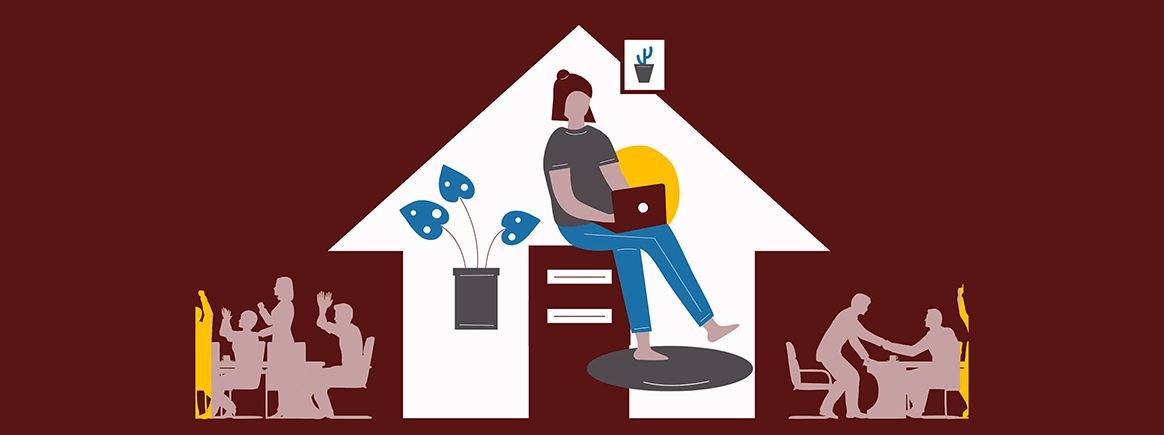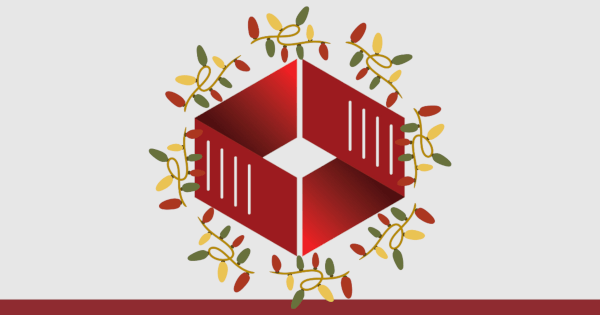
The Impact of COVID
Introduction
The COVID-19 pandemic has forced large sections of the economy to work from home. The legal profession is fortunate in this regard as the nature of their work means it is more easily done from home than many other industries, albeit with sometimes significant adjustments and increases to technology.
The big question facing the industry is to what extent these changes are permanent. In a recent CBRE study, 58% of respondents agreed with the statement that three years from now, COVID-19 will have had a significant impact on the future of the legal workplace.
Many law firms across Canada view the current moment as a unique opportunity to change the nature of their physical office space, whether to save money or to improve working conditions for lawyers and staff alike.
The Opportunity
Most law firms in Canada have spent the past year with no more than 30% capacity in their physical offices. Many firms have directed their entire staff to work from home. As a consequence, firm administrators and partners look at a large amount of space, often costing a fair amount of money, going unused.
The average law firm spends between 6% to 12% of its total revenue on office space. For firms which have had their staff largely working from home, and have managed to maintain (or even increase) productivity, they may now look at this expense as partly unnecessary. The natural instinct is to reduce an expense where the return or benefit is no longer as high.
The Case Against
It is almost impossible for a law firm to do away with physical premises entirely. While tempting to do away with physical space, there are a number of areas where a firm's bottom line might eventually be impacted, wiping away any immediate savings.
Productivity
The first question a firm must answer is whether productivity has remained constant, increased, or decreased while their personnel work from home. It is important to note that, while billable hours may have risen during the pandemic when there were not a lot of alternative ways to pass the time, this may be a false comparison. A firm might find that, with a return to normal and a more full work-life balance, equal or increased productivity might be lost if employees are permitted to work from home.
Meeting Clients
Lawyers will continue to have to meet with clients. Due to the often private and/or complex nature of client matters, it is unlikely that these interactions will continue to happen by teleconference. Clients, especially during a first meeting, expect a professional and often impressive office space, and may be put off if they cannot meet their lawyer in person. Additionally, law firms that serve the general public (as opposed to businesses) will want to have a location near their client base, but also convenient to major transit, court facilities, and professional services. Home offices will rarely suit this purpose.
Mentorship
A number of our clients have told us that it takes a village to create a lawyer. Indeed, all lawyers begin their careers with a defined period of mentorship, their Articles, but mentoring should continue throughout a lawyer's career. The quality of a firm's mentorship program cannot be understated, as lack of mentorship is one of the top three reasons cited by junior lawyers for leaving their job. In the short term, adequate mentorship helps to ensure that the firm will continue to produce high quality legal products. In the long term, mentorship is essential to employee retention. It can be very difficult for younger lawyers to seek out the mentorship they need, and doubly so when physical proximity to senior counsel is lost.
Collaboration
Legal work can be divided into two broad categories: head down solo legal work and work that requires collaboration. Working from home may appeal to a lawyer when the task is reading file material or preparing a discovery report — why drive to an office to sit at a desk when one can do that at home and save the commute? However, a large part of the work on a file is collaborative, both between lawyers and between lawyers and their staff. Like mentorship, collaboration requires proximity, and many of our clients have expressed that — even with modern technologies — they miss the ability to get quick insights from a lawyer next door or check in with a staff member sitting outside their office.
The pandemic has presented law firms with a false data set, given that there was no real choice involved. Once the choice to work from home or work in the office is regained, firms that have relegated their employees to home in an effort to save on office space may discover lasting issues with productivity, client management, and firm culture.
The Options
Despite the downsides, the impulse to reduce fixed costs is a good one, and potentially meaningful. If a firm can reduce their office space cost by even 30%, it may strengthen the bottom line by as much as 4%. Once a firm has assessed the risks of reducing office space and has addressed any concerns, there are various strategies that they may employ to reduce their overhead.
Strategies to Reduce Existing Office Space
Many firms will refocus on the cost of their premises, but decide that drastic action is not possible (perhaps their lease extends for some time into the future). There are still measures a firm can take to make their space more efficient (i.e. capable of accommodating more staff and lawyers in the same space), or to prepare to move to less space when the lease ends.
-
File Storage and Digitization
The elimination of physical files can save firms a tremendous amount of space. Not having to store paper can free up entire rooms and reduce the necessary footprint for each employee. With a paperless office, there are even further opportunities to reduce space dedicated to equipment, like mailrooms and fax machines.
-
Staff Ratios
Reducing the number of support staff per lawyer also allows a firm to reduce their office needs. The rise of specialized legal software that automates recurring tasks, better and more centralized file organization, and a trend toward specialization and realizing economies of scale among support staff has allowed firms to manage the same number of files with fewer employees, thus saving space.
-
Office Sizes
Law firms have also tended toward smaller office spaces for lawyers in recent decades. This was obviously a trend well before COVID-19 and is likely related to the increased cost of real estate in major cities in Canada. The standard now is 200 sq. ft. for partners and 120 sq. ft. for associates, whereas offices might have been three times that size previously.
Should a law firm decide that saving costs related to office space is where they would like to focus their efforts, but also decide that they do not wish to enact significant changes, the above efforts can lead to a slow reduction in office space over time.
Co-locating Office Space
A relatively new idea for law firms (and one we will discuss in an upcoming blog post), co-locating office space means opening a second location for your firm. The primary location would likely be in the downtown core or your primary area and would comprise meeting facilities, some lawyer offices, and client amenities. These offices might cost between $40-100 sq. ft. The second office would be located in a much less expensive part of the city, potentially even a suburb where a larger proportion of the firm's staff actually live. They would comprise support workspace, server and technical rooms, and staff amenities. Such offices often cost $8-15/sq. ft. They can be popular with staff, as they can shorten commutes and offer more space and amenities like free parking. They can also provide support to lawyers in nearby court jurisdictions, and a satellite office for meetings with clients who do not wish to travel downtown.
By taking an office that was previously entirely rented at $50 sq. ft. and splitting it equally between $50 and $15/sq. ft., a firm can reduce their lease costs by 35% while achieving all sorts of advantages.
Downsizing Office Space
Finally, a firm may decide that some of the changes brought about by the COVID-19 pandemic will remain after it is gone. Lawyers and support staff may wish to continue working from home where possible, and this would permit a firm to reduce their office space to the extent it is not being fully used.
Some of our clients who happen to have their lease come to an end have taken this approach, with a few going so far as to reduce their leased space by over 50%. This strategy depends on four essential factors:
- Providing excellent technological options and support to lawyers and staff, giving them the fullest opportunity to recreate all of the advantages of the office as best as possible while at home.
- Measuring productivity effectively to ensure that the firm is not losing out on billable hours or suffering a reduction in quality of work due to less oversight.
- Ensuring strong retention by offering staff (particularly lawyers) choices in how they navigate the change. For instance, a firm might offer a slight increase in salary or flexibility in exchange for working from home, or might require a promise to attend the office full time in exchange for a private office.
- Reconfiguring the office to prioritize collaborative and mentoring spaces, and keeping such elements of the office as are vital to client relationships.
Conclusion
The COVID-19 pandemic has refocused law firms on the usefulness and ROI of a cost that, traditionally, is second largest only to compensation. Firms are asking what their personnel truly need (or want). This is a positive thing. Innovation and a break from tradition might allow a law firm to set up their premises in such a way that all stakeholders benefit while reducing costs.
Tracument can help provide expanded solutions for sending and receiving documents, especially as many of your employees continue to work from home. For more information, see our features page or call us at 1.888.900.4701.
You may also like
Happy Holidays Message from David Swadden, CEO
December 18, 2025
We would like to wish all our clients and readers a wonderful holiday season filled with joy and laughter.
Tracument Holiday Schedule
December 11, 2025
We would like to update all our clients of our Holiday Schedule this holiday season!
Tracument Wrapped!
December 4, 2025
What 2025 Looked like for Tracument and for you!




